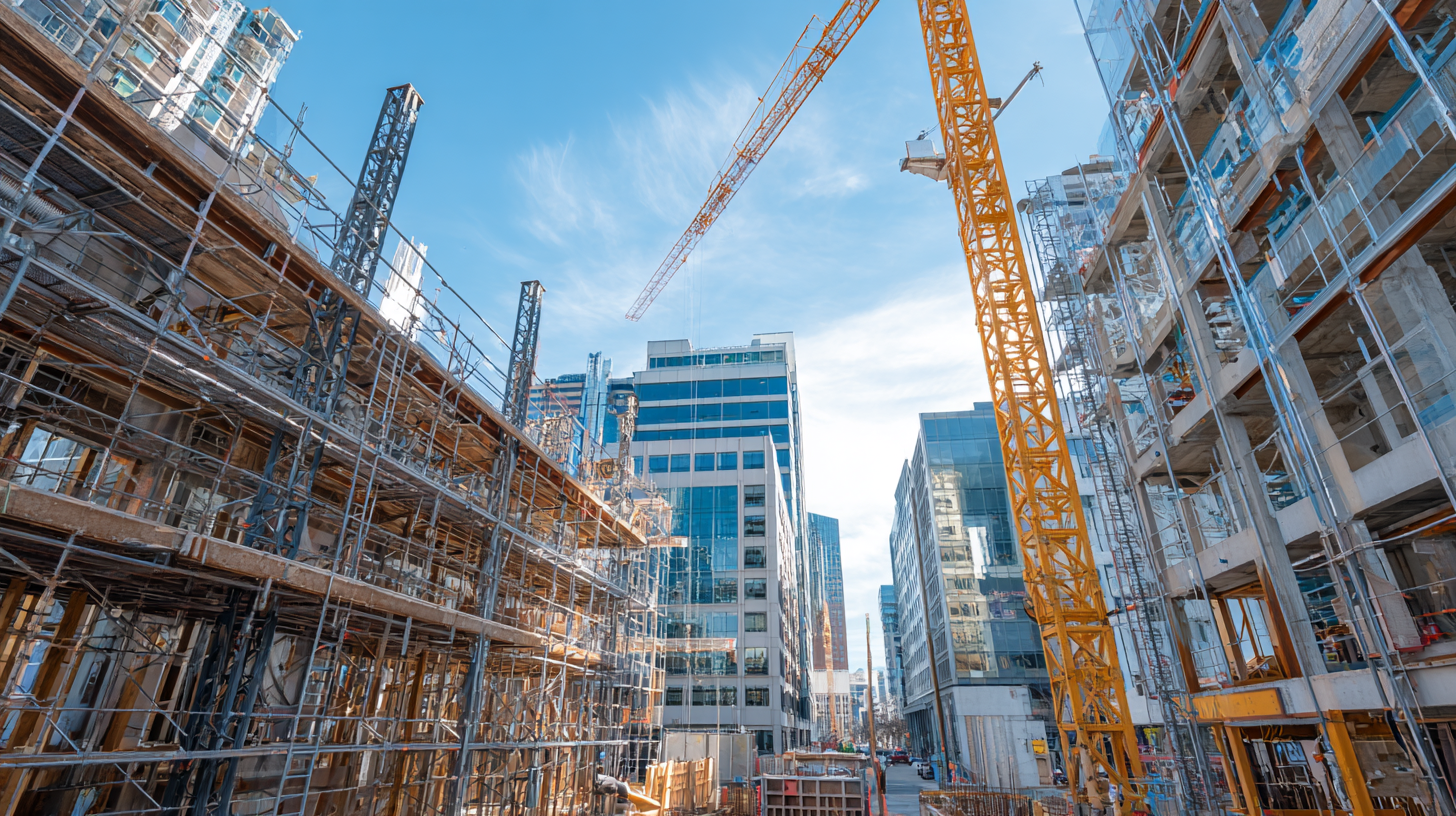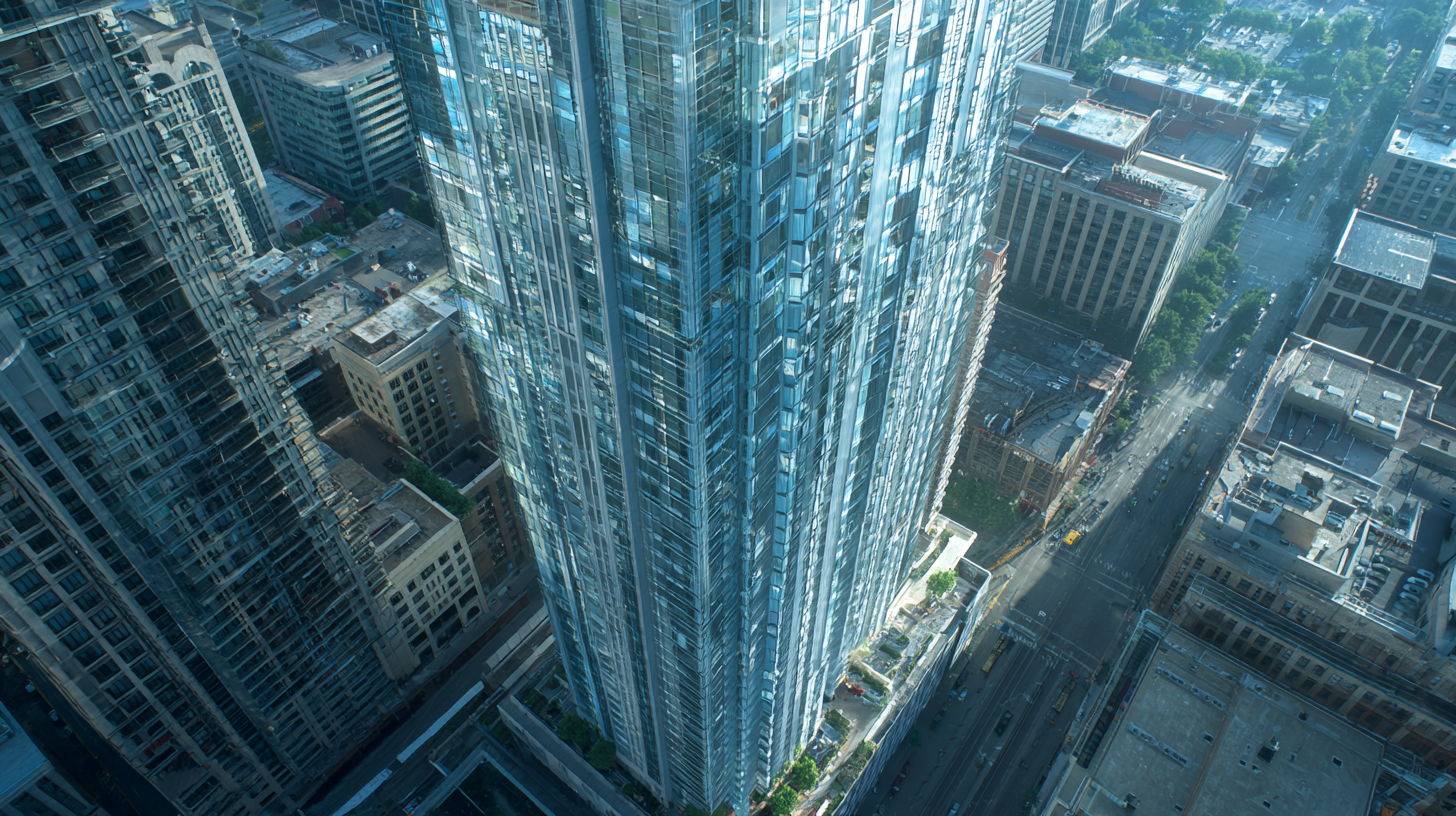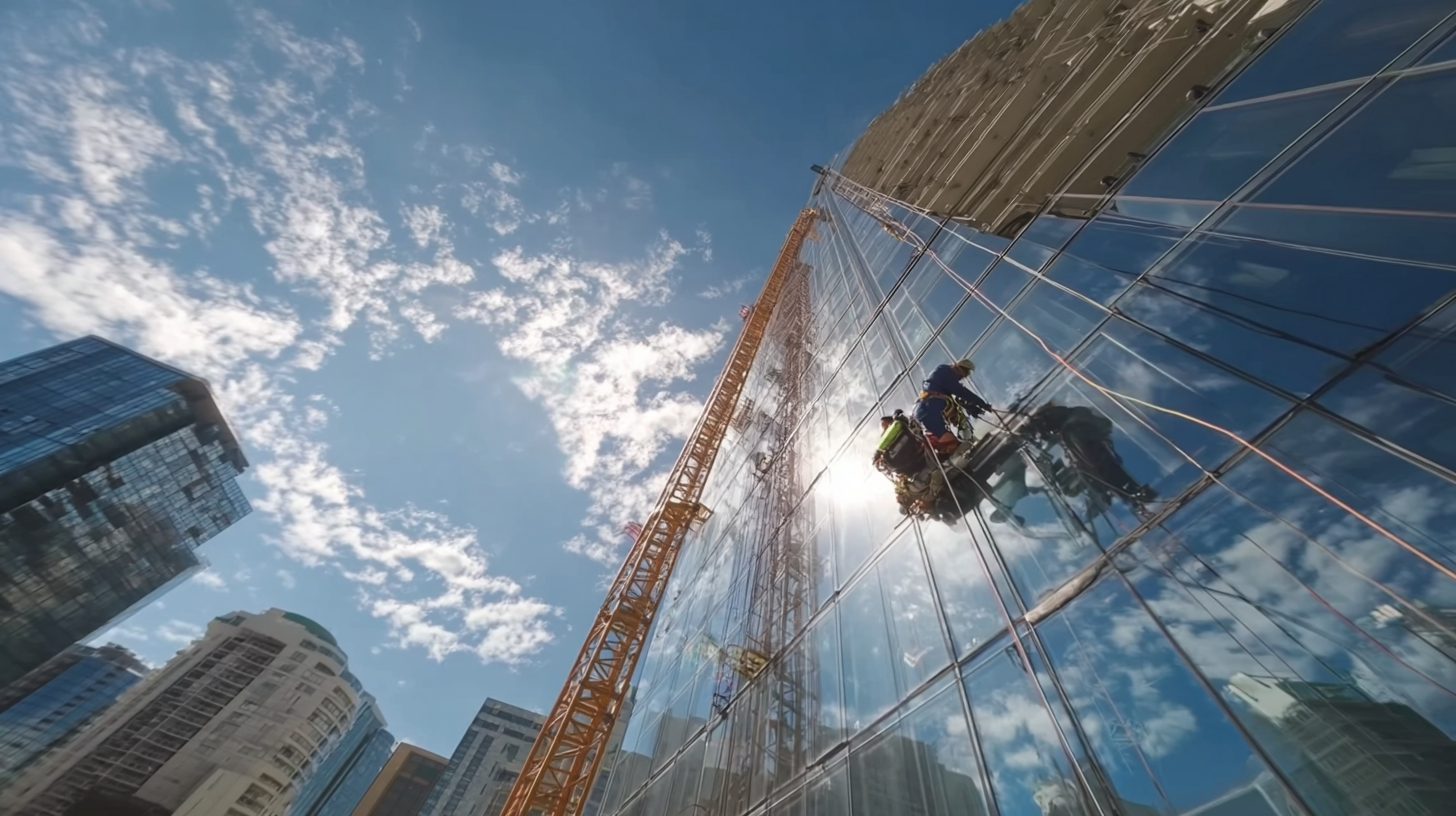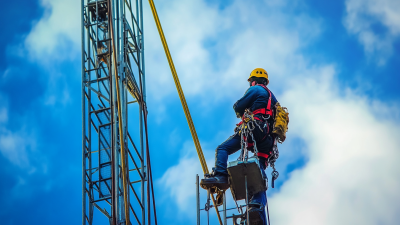Revolutionizing High-Rise Projects: The Benefits of Mast Climbers in Modern Construction
In the rapidly evolving landscape of modern construction, the integration of advanced technologies is reshaping the approach to high-rise projects. One such innovation is Mast Climber Construction, which has gained traction due to its ability to enhance productivity and safety on job sites. According to a report by the Global Construction Market Report, the use of mast climbers can increase overall efficiency by up to 30%, significantly reducing the time and labor costs associated with traditional scaffolding methods. Additionally, industry analysis indicates that mast climbing work platforms provide superior access for workers and materials, improving site logistics and minimizing delays. As urban areas continue to expand vertically, embracing Mast Climber Construction not only positions construction companies at the forefront of industry advancements but also contributes to more sustainable building practices by optimizing resource usage and site management.

Benefits of Mast Climbers in Enhancing Safety Standards for High-Rise Construction Projects
Mast climbers represent a significant advancement in the safety standards of high-rise construction projects. Unlike traditional scaffolding, mast climbers provide a more stable and secure platform for workers. Their innovative design allows for quick vertical movement, which not only enhances productivity but also minimizes the risks associated with falls. By reducing the reliance on ladders and unstable scaffolding, mast climbers ensure that workers can access their job sites safely and efficiently.
Furthermore, the robust construction of mast climbers is engineered to withstand harsh weather conditions, further protecting workers on-site. The ability to operate in windy environments reduces downtime and the risk of accidents associated with adverse weather. Additionally, mast climbers have built-in safety features such as guard rails and automatic braking systems, which act as crucial safeguards against potential mishaps. Overall, the integration of mast climbers in high-rise projects marks a pivotal step toward establishing enhanced safety protocols, ultimately leading to better outcomes for both workers and project timelines.
Revolutionizing High-Rise Projects: The Benefits of Mast Climbers in Modern Construction
| Dimension | Description | Impact |
|---|---|---|
| Safety Standards | Mast climbers provide a stable platform at height, minimizing the risk of falls. | Reduction in workplace accidents and injuries. |
| Efficiency | Mast climbers allow for faster transportation of materials and workers to various heights. | Increased project completion speed and reduced labor costs. |
| Accessibility | Provides easy access to hard-to-reach areas on high-rise buildings. | Improved project quality and reduced downtime. |
| Versatility | Can be used for various construction tasks, from masonry to installing windows. | Flexibility in construction processes, allowing for diverse project requirements. |
| Cost-Effectiveness | While initial investment may be significant, long-term savings on labor and time are notable. | Overall reduced project costs and budget adherence. |
Maximizing Efficiency: How Mast Climbers Reduce Labor Time and Costs in Modern Construction
In modern construction, mast climbers have emerged as a game-changing solution for high-rise projects, particularly in terms of efficiency and cost-effectiveness. These mechanized platforms allow workers to operate at various heights with ease, significantly reducing the time required for vertical transportation of materials and tools. By eliminating the need for traditional scaffolding methods, which can be labor-intensive and time-consuming, mast climbers enable a streamlined workflow that allows construction teams to focus on their tasks rather than logistics.
Moreover, the implementation of mast climbers leads to substantial reductions in labor costs. With their ability to move vertically and horizontally, these platforms enhance worker safety and productivity by minimizing downtime and the risk of accidents associated with height work. Laborers spend less time waiting for materials to be delivered and more time engaged in productive activities, which accelerates project timelines. In a competitive construction landscape, adopting mast climbers not only translates to cost savings but also improves overall project efficiency, making them an indispensable asset in modern high-rise building endeavors.

Comparative Analysis of Traditional Scaffolding vs. Mast Climbers in High-Rise Developments
In the construction of high-rise buildings, the choice between traditional scaffolding and mast climbers can significantly impact project efficiency and safety. Recent studies show that mast climbers can reduce labor costs by up to 30% compared to traditional scaffolding, primarily due to their faster setup and adaptability to various building heights. According to a report by the Construction Industry Institute, projects utilizing mast climbers reported a 25% increase in productivity, allowing for quicker completion times and minimizing delays that typically arise from weather or logistical issues.
Tip: When selecting a lifting solution for your high-rise project, consider the specific requirements of your site, such as height and accessibility challenges. Mast climbers are particularly beneficial for taller structures, where the speed of material movement and worker access can drastically influence project timelines and costs.
In contrast, traditional scaffolding, while still widely used, presents challenges such as increased assembly time and potential safety hazards. The OSHA indicates that falls from elevated surfaces contribute to a significant percentage of construction injuries. With mast climbers, the enclosed platform design enhances safety by providing a reliable working environment, reducing the risk of accidents.
Tip: Invest in comprehensive training for your team on mast climber operations. Proper training not only enhances safety but also optimizes the equipment’s performance and longevity, ultimately leading to a more successful high-rise project.
Environmental Sustainability: The Role of Mast Climbers in Reducing Waste and Carbon Footprint
Mast climbers are revolutionizing modern construction, particularly in high-rise projects, by significantly enhancing environmental sustainability. These innovative systems not only streamline the construction process but also play a critical role in reducing waste and minimizing the carbon footprint. By allowing crews to access specific work areas more efficiently, mast climbers help to lower the consumption of construction materials and reduce unnecessary emissions from machinery. This shift towards more sustainable practices is becoming increasingly vital in addressing the environmental impacts of construction.

In a broader context, the principles of sustainability in construction echo innovations in other industries, such as eco-friendly sailing alternatives. The striking design of modern tall ships, with their towering masts and sails, exemplifies a commitment to reducing environmental impact by offering a more sustainable travel option compared to traditional mega cruises. Just as these ships harness wind power to minimize reliance on fossil fuels, mast climbers utilize efficient engineering to lower energy consumption and waste generation on construction sites. This convergence of technology and environmental awareness marks a critical advancement in our approach to both construction and broader lifestyle choices.
Innovative Design Features of Mast Climbers that Improve Accessibility on Tall Buildings
Mast climbers have emerged as a transformative force in modern construction, particularly in the context of high-rise projects. One of the most significant innovations is their ability to enhance accessibility, allowing workers to navigate vertical spaces with unprecedented ease. According to a report by the Construction Industry Institute, the integration of mast climbers can reduce construction time by up to 30%, primarily due to their efficiency in transporting materials and personnel vertically. This not only accelerates project timelines but also significantly improves safety conditions by minimizing the risk associated with traditional scaffolding systems.
Additionally, the design features of mast climbers, such as adjustable platforms and extension capabilities, cater to the unique challenges posed by tall buildings. For instance, modern mast climbers can extend up to several times their height, providing flexible access points that directly align with workers' needs as they progress through different stages of construction. Industry studies indicate that this adaptability not only cuts labor costs by approximately 20% but also enhances the quality of work performed at height, as workers have more stable and safer working environments at various elevations. With these innovative design features, mast climbers are revolutionizing accessibility and efficiency in high-rise development projects.
Related Posts
-

Exploring the Benefits of Using Mast Scaffold in Modern Construction Projects
-

Finding Quality Suppliers for Best Mast Climber Hire a Practical Guide and Checklist
-

Finding the Right Supplier for Best Easy Climb Mast Climbers Your Ultimate Guide to Quality and Reliability
-

What is the Advantage of Using the Best Mast Climbing Platform for Construction Efficiency
-

Mastering Elevated Work Platform Safety: A Step-by-Step Tutorial for Global Buyers
-

5 Essential Tips for Choosing the Right Mast Climbing Platform for Your Project
